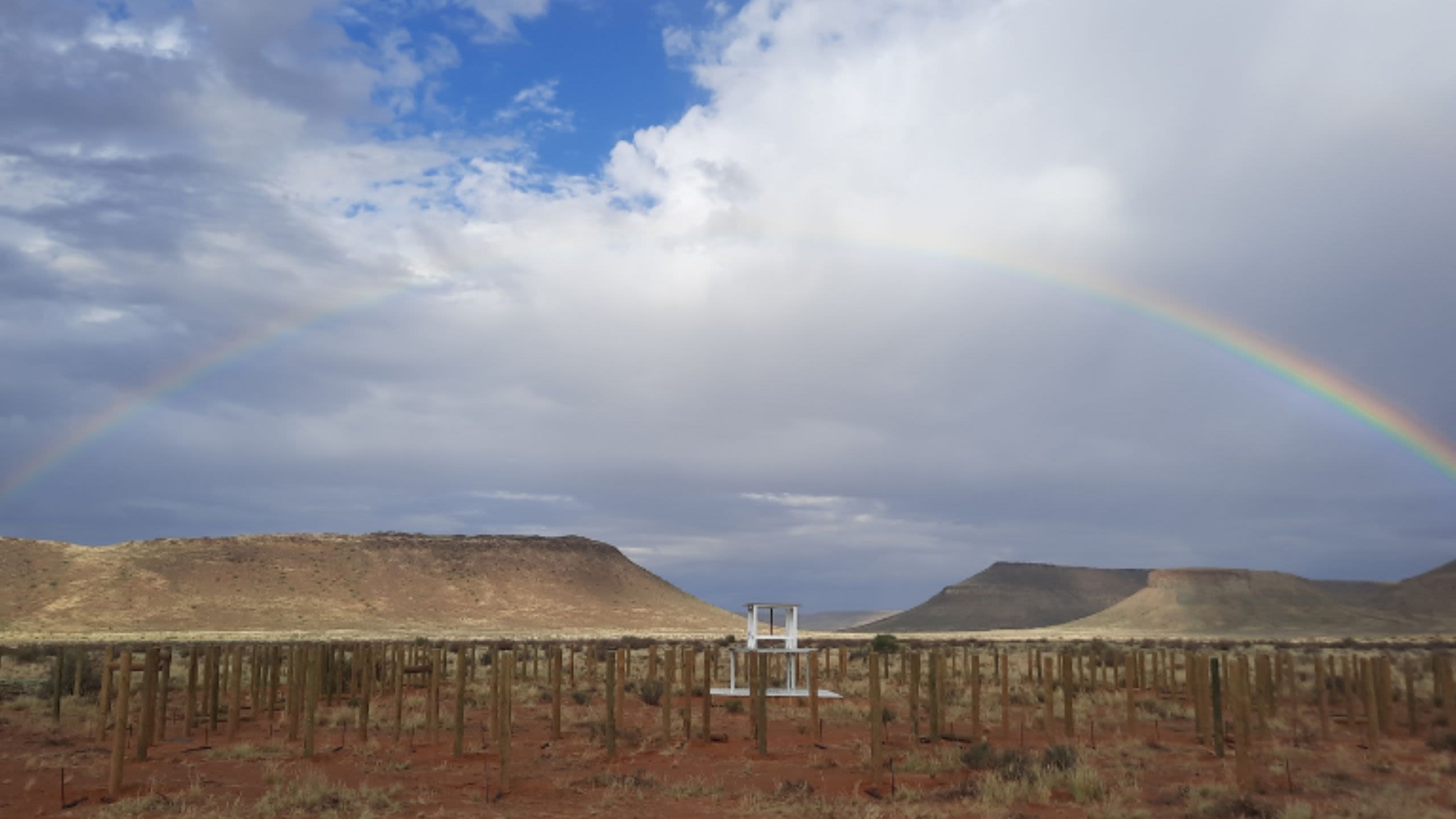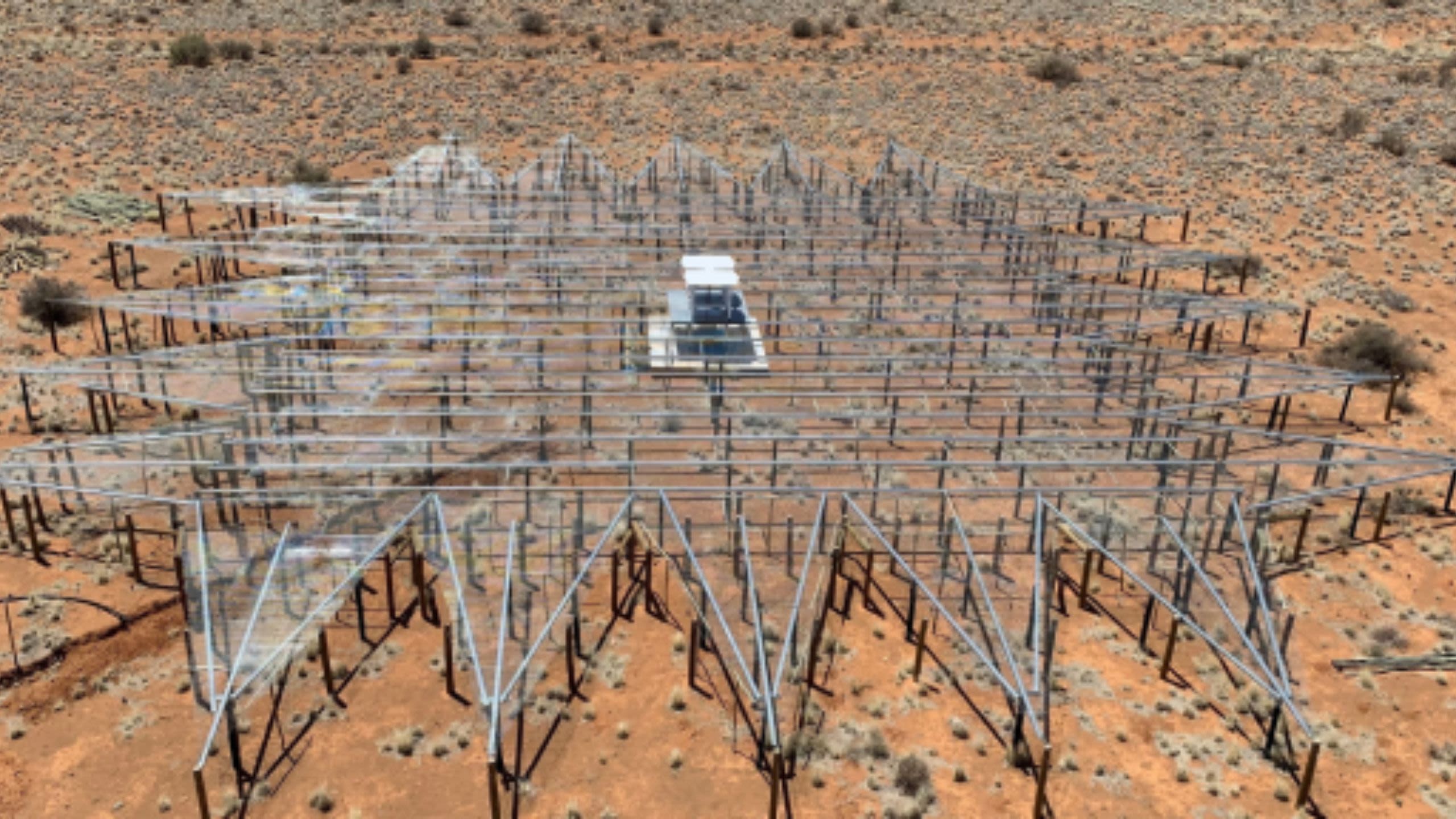REACH for cosmic dawn

In December, astronomers from the Cavendish Laboratory and the Kavli Institute for Cosmology celebrated the start of operations of a new radio telescope, over five years in the making. REACH (the Radio Experiment for the Analysis of Cosmic Hydrogen), is now beginning to probe the times in the early universe known as cosmic dawn and the epoch of re-ionisation, when the first stars awoke and ended the long dark ages that followed the Big Bang.
REACH is located in the Karoo, a semi-desert area of South Africa ideally suited for radio astronomy thanks to its remarkably low levels of radio interference from human activity. The REACH instrument itself, built through a collaboration between the University of Cambridge and Stellenbosch University, is an antenna radiometer that studies the sky at frequencies between 50 and 200 MHz. REACH’s target is the 21-cm atomic transition in neutral hydrogen atoms, an electromagnetic signature that allows astronomers to probe the period immediately after the Big Bang, from when the first atoms formed, filling the dark universe with neutral hydrogen and helium, up to the formation of the first stars and galaxies.

This relatively uncharted period is crucial for understanding how the first structures formed in the cosmos but is difficult to observe at shorter wavelengths as light from the first stars is blocked by the hydrogen clouds that surrounded them. Instead, astronomers look for the signatures left as those first luminous sources heated and re-ionised the surrounding hydrogen gas, leading to characteristic 21-cm microwave emissions, which have subsequently been redshifted to radio wavelengths of a few metres by the expansion of space.
However, this faint primordial 21-cm signal is extremely hard to detect due to huge backgrounds from human activity such as television transmitters, and radiation from the ionosphere, which are 100,000 times brighter than the sought after signal. While the upcoming giant radio telescope, the Square Kilometre Array (part of which is also being built in the Karoo) will ultimately produce a detailed map of the 21-cm line out to the edge of the observable universe, REACH is aiming for a simpler method of detection by averaging the signal across the sky. The REACH team are employing advanced Bayesian statistical techniques and physics models of their instrument, the signal and the backgrounds to filter the precious cosmic information from the ocean of noise. An exciting and challenging journey of discovery has now begun.